
Three Nights at Yamazaki House, Sumita-cho
David Kirkpatrick – 1st September 2017
住田町ヤマザキハウスの3泊
デイビットカークパトリック-2017年9月1日
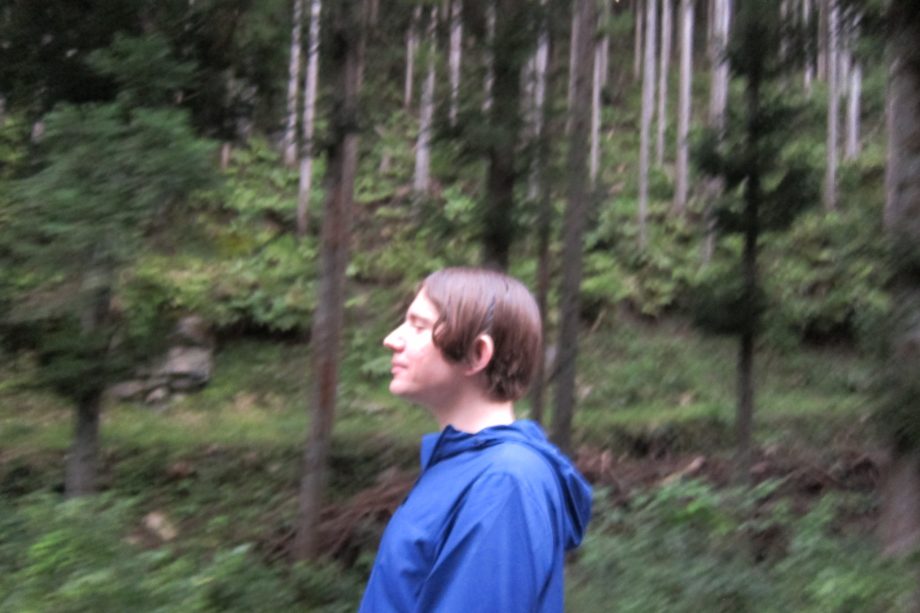
My first impression of Sumita-cho was of a mountain road flanked by seemingly-abandoned houses and a bear warning sign.
Yamazaki house, where we were invited to stay, was hand-built by a local carpenter many years ago. Old wood construction and tatami floors meet a scatter of surprise 60s/70s contemporary highlights. The local insects look a little unusual but most keep to themselves, happy to do their thing while you do yours. When it rains tree frogs come to visit.
私の住田町の第一印象は山道と誰も住んでいなそうな家々と熊出没きけん!のサインでした。
滞在したヤマザキハウスは地元職人さんの手、気仙大工の技術によってつくられた何年も昔に造られたお家でした。古い木の構造や畳の床、時々現れる60・70年代の味。東北、地元にしか生息していなそうな虫が沢山いて、でも虫たちはみんな私たちに気を取られずに自分の事を自分でやってますという感じでした。雨がふればアマガエルが沢山訪れました。

Under this quiet surface there is activity everywhere. Walking down the main street to the local café we were stopped and invited into the seniors’ recreation space, full of the happiest grandmas I have ever met. They offered us an endless supply of iced coffee, home-made pickles, fruit and sweets, followed by an impromptu origami lesson. This is a town where community is important. The award-winning town hall reflects this.
この静かな空間の中に色々な活動が行われてました。道路を下りてまちやカフェに向かう途中よりあいカフェの方々にどうぞどうぞ~と明るく手招きされ、そのまま中にはいってみると、これまで私が覚える中で一番元気で可愛いおばあちゃんたちに出会いました。そこでアイスコーヒー、手作りのお漬物、果物、お菓子、あっと言う間に私たちのテーブルに運んで下さって、御馳走になりました。その間即興で折り紙を教えて頂いたのです。地域社会、集団を大切にする町はこう言うことなのだと理解し、それが受賞されている町役場に正に反映されてると思いました。
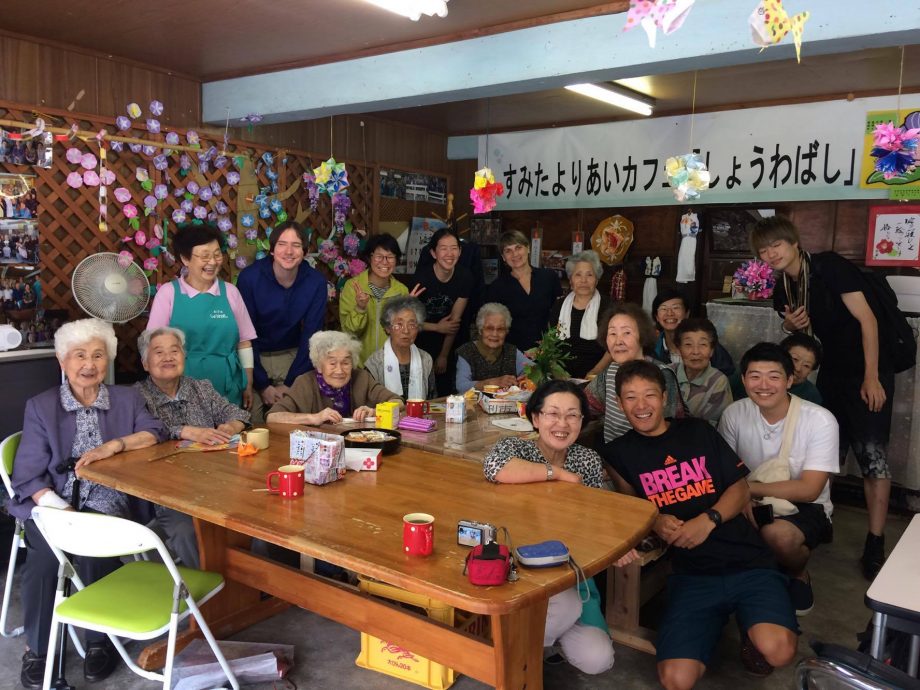
Nearby we visited a historic house, a wood-working studio, and sat in on a Shishi-Odori (deer dance) rehearsal. Sumita-cho has a strong focus on sustainably, of its local environment, traditional dance and unique carpentry techniques prized throughout Japan.
私たちはその後、気仙大工左官伝承館、杉の家、柿内沢鹿踊りの稽古を見学しました。住田町は地元の環境、昔から伝わる踊りや、全国的に評価の高い建築の技術などを継承し、それを生かし未来に続かせる事に強い焦点を置いていると思いました。
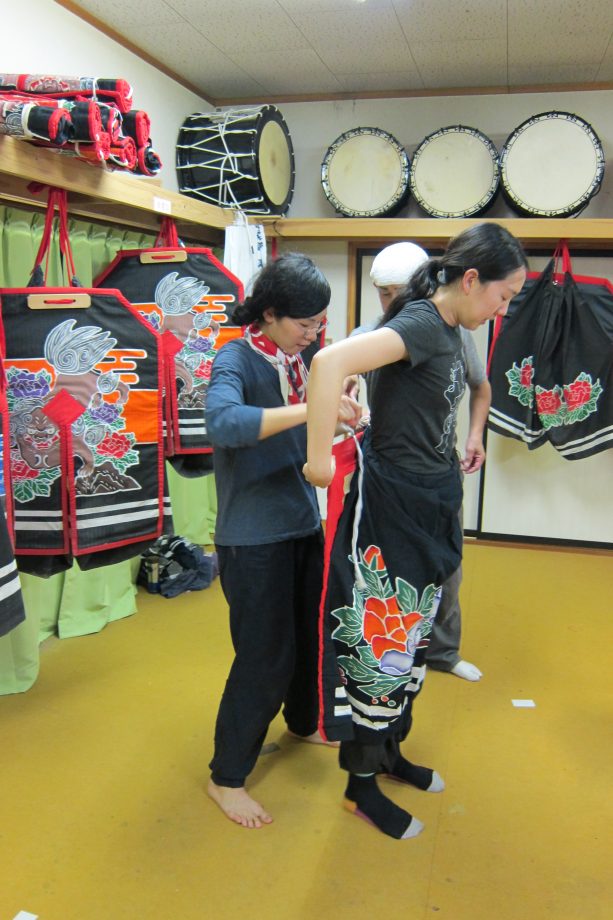
Further down the mountains is Rikuzentakata, a city wiped out by the 2011 Tōhoku tsunami. Seeing the reality behind the news stories was a heavy moment. Dump trucks are everywhere, raising the level of the land in preparation to re-build. A flooded supermarket, apartment building and a lone pine tree have been left standing as monuments. An information centre, small shopping areas and restaurants have now begun popping up.
住田町を下り、2011年に津波で流された陸前高田の地域は、テレビのニュースで見ていた映像より実際の場所を見ることは重い心境でした。目に見える範囲に沢山のダンプカーがかさ上げ工事をしていました。まちの駅、ユースホステル、松の木はモニュメントのため残されています。インフォメーションセンター、最近オープンしたショッピングモール、レストランなど新しい建物ができていました。
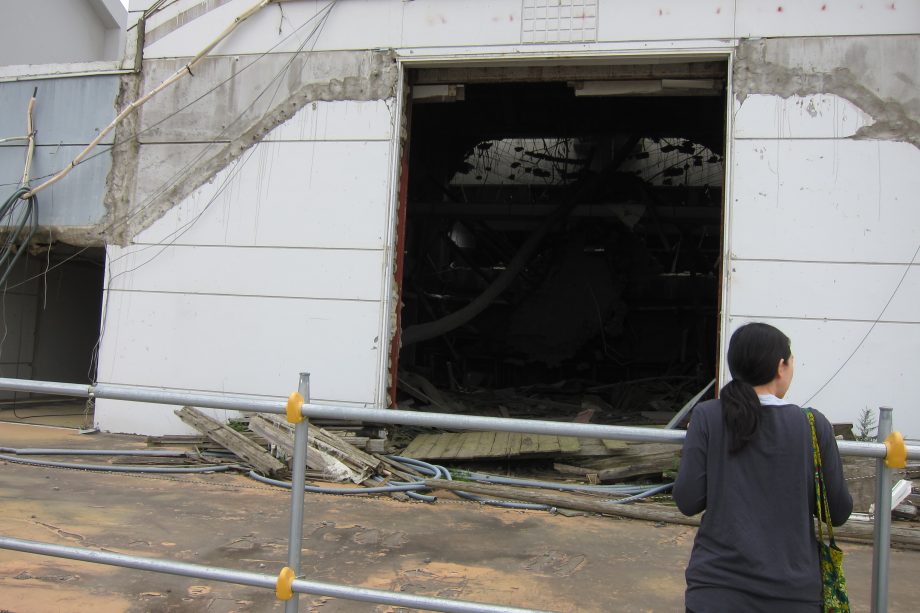
On the last day of our stay we visited Joufukuji shrine, built around the same time as the origins of Shishi-Odori. A 400 year old tree outside was hit by lightning recently, slowly rotting from the inside. Rather than removing the tree the locals decided to carve the lower part into a Buddha that will watch over the city for many years to come.
最終日には浄福寺を訪れました。浄福寺は鹿子踊りと同じくらい長い歴史があるそうです。お寺の脇には400年前からそびえ立つ大きな木がありました。18年前に落雷にあってから少しずつ中から朽ちていて、全て切り落としてしまうかわりに下の方を残し、そこから木を削りながら仏様を造っている貴重な瞬間を拝見しました。仏様の視線は住田町のまちを見ていて、これから何百年何千年先を見守って行かれるでしょう。
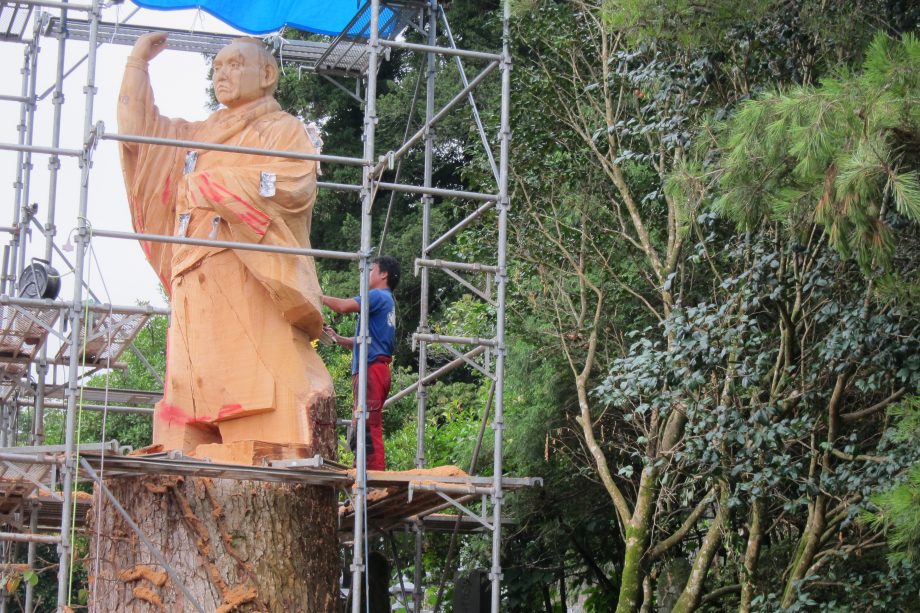
The atmosphere of Sumita-cho is special. There is a strong feel of the old world, but here it continues and evolves. The connection between the land and humanity, the individual and community, hasn’t been lost here as it has in much of the rest of the world. I’m thankful to have experienced Sumita-cho, even if only for a few days.
住田町の雰囲気は特別です。長い歴史を持ち、古くから残された世界観とそこから未来に続き、成長する強い気持ちが感じられます。おそらく世界中殆どの場所で失われてしまった、土地と人々の間、個と集団の間の繋がりが住田町には存在します。短い期間でしたが住田町に滞在させていただいた事に心から感謝いたします。

Thanks to Sioned Huws and Jun Matsuyama for inviting Murasaki Penguin (Anna Kuroda and I) to Sumita-cho from the 27th to the 30th August 2017.
2017年8月27日から30日までの間私たちMurasaki Penguinを住田町に呼んで下さったショーネッド・ヒューズ、松山隼さんに感謝いたします。
